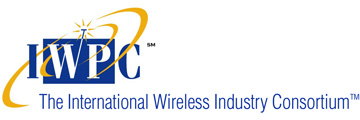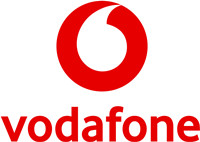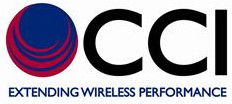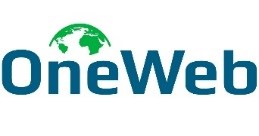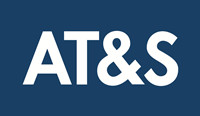Enhancing Rural Connectivity, New Wireless Opportunities and Deployment Scenarios
Maximizing the impact of 4G/5G connectivity on rural communities. Exploring new use-cases including tele-health, agriculture and drone applications for vertical industries. What impact will new satellite technologies and innovation have on cellular services?
Hosted by:

When
January 29-31, 2019
Introduction
The wireless industry is gearing up for the introduction of several flavors of 5G. Some may argue that other than capacity increases for high traffic urban areas, Enhanced Mobile Broadband below 7GHz will not initially provide more than LTE-Advanced
does today. Propagation challenges are likely to limit initial
mmWave deployment to fixed wireless access and massive device connectivity is now supported by NB-IoT and numerous license free technologies.
So what does all this mean when it comes to 5G deployment for less densely populated regions of the world? Rural communities need connectivity, both fixed and mobile, for a variety of applications from agriculture to healthcare to education. Industries and homes alike need to be connected in order to prosper and thrive in a fast-moving world.
Recently, the FCC opted to go forward with an exploration of allocating $100 million for a “Connected Care Pilot Program” designed to deliver telehealth solutions with a focus on rural communities. Can we expect doctors and other health practitioners to treat patients remotely at home using video streaming and other forms of two-way live communications?
Will machine connectivity for next-generation sensors, cloud platforms, telematics, autonomous machines and various other technologies drive demand to connect globally scattered resources through cellular 5G and satellite?
This workshop will assess connectivity needs for rural
and sparsely populated areas, explore use cases and
identify verticals which may drive deployment of next
generation 5G technologies.
Workshop Goals
- Identify key verticals and use-cases which have the potential to drive 5G demand in rural and less densely populated regions
- Understand which 5G and next generation technologies make sense for these areas
- Explore potential for current and evolving wireless technologies
- Assess opportunities, challenges and roadblocks for broader nationwide 5G deployment
Agenda
|
DAY 1 Tuesday 7:00 PM |
Evening Reception & Registration |
At Hotel |
||||||||
|
DAY 2 Wednesday 7:00 AM |
Breakfast |
|||||||||
|
8:00 AM |
Welcome and Introductions
|
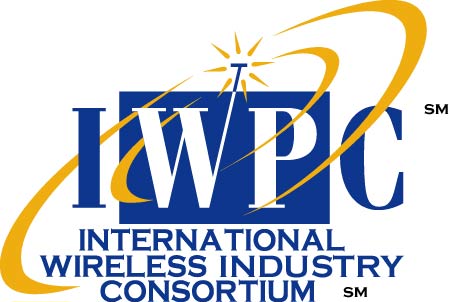 |
||||||||
|
9:00 AM |
Host Introduction and Keynote
|
Keynote Presentation
President
|
||||||||
|
10:00 AM |
Networking Break |
|||||||||
|
10:40 AM |
Service Provider Perspectives
|
Facebook Connectivity and the Rural Challenge
Research Scientist; Head of Connectivity
5G in a Box : Answer to Rural Connectivity
AVP ( Network Engineering and Delivery)
|
||||||||
|
12:00 Noon |
Networking Lunch |
|||||||||
|
1:00 PM |
Service Provider Perspectives, continued
|
5G User Experience and Capacity
Director., Wireless RF Engineering
Mississippi’s First 5G Deployment
Wireless Systems Engineer
VP, Business Development
|
||||||||
|
3:00 PM |
Networking Break |
|
||||||||
|
3:40 PM |
OEM Perspectives
|
Performance evaluation of Massive MIMO in rural scenarios
DMTS
5G FWA Broadband Access to Rural Communities
Sr. Staff Systems Engineer
5G Rural - Fixed Wireless Access Economics
CTO, BLiNQ Networks
|
||||||||
|
5:00 PM |
End-of-Day Panel Session |
|
||||||||
|
5:40 PM |
Adjourn |
|||||||||
|
7:00 PM |
Networking Dinner - Brennan's |
|
||||||||
|
DAY 3 January 31 Thursday 7:00 AM |
Breakfast |
|||||||||
8:00 AM |
Leveraging Satellite Communications for 5G
|
Leveraging Satellite Communications for 5G
Head, Marketing & Business Development
5G Services via Satellites
VP
Satellite for 5G
Senior Director, Marketing
LEO Satellites and Rural Connectivity
Director, Public/Private Partnerships
|
||||||||
|
10:00 AM |
Networking Break |
|
||||||||
10:40 AM |
System Vendor Perspectives, continued
|
Delivering Low Latency & Distributed Services with the Secure Mobile Edge Cloud
Chief Architect
Models for Monetizing 5G
VP
|
||||||||
|
12:00 Noon |
Networking Lunch |
|||||||||
|
1:00 PM |
System Vendor Perspectives, continued
|
Fast and Cost Efficient Rollout of Rural Services
SVP and Chief Product Officer
Bringing Gigabit to Every Town’s Main Street
VP, Product Line Management
5G NR Field Measurements – A First Look
Technology Manager, NA
|
||||||||
|
3:00 PM |
Networking Break |
|||||||||
|
3:30 PM |
Technology Enablers
|
Cellular Connectivity for BVLOS Drone Operation
GM
Leveraging Mobile Satellite-Enabled Vehicles for Rural 5G Connectivity
Connectivity Solutions Manager
Supporting NGSO and 5G Communications
Chief Technologist
Enabler Technology for 5G & Communication Satellites
Project Leader
|
||||||||
|
5:00 PM |
Closing Discussion |
|
||||||||
6:00 PM |
Adjourn |
FAQs
- What is the deadline for presentation/handout materials?
- What can I do to prepare for speaking an at IWPC workshop?
- Who are the attendees?
- What are the costs/registrations fees?
- Hotel information?
- What are the travel options from the airport to the hotel?
- Are there any audiovisual requirements?
- Will business cards be collected?
- What is the dress code?
- How will handout materials be provided?
- What is the deadline for
presentation/handout materials?
Deadline for electronic version of presentation/handout materials: Monday, January 14, 2019
- What can I do to prepare for speaking an at IWPC workshop?
Click on the link below for a short video guide regarding preparing for and improving your IWPC presentation:
- Who are the attendees?
- We do not permit the Press.
- We do not permit Analysts.
- We do not permit Consultants.
- We do not permit 3rd party sales reps.
- We only permit "first hand knowledge experts" in business and technology issues, prepared to contribute to the discussion.
- What are the costs/registrations fees?
ALL Hosts, Speakers, Panel Members and Attendees will be asked to cover out-of-pocket workshop costs such as conference room costs, food (Social Reception plus First Day breakfast/lunch/dinner plus Second Day breakfast/lunch plus Breaks), audio/visual costs, etc.
These costs will be $997 (USD) per person. (For IWPC Members only.)
ALL Hosts, Speakers, Panel Members and Attendees will be asked to pay this fee in advance with either Visa, MasterCard, American Express, cash, personal check or business check. Make checks payable to IWPC.
- Hotel information?
Renaissance New Orleans Arts Hotel
700 Tchoupitoulas St
New Orleans, LA USA 70130
Phone: +1 504-613-2330
Hotel WebsiteThe IWPC room block rate is $139/night. The deadline for hotel reservations is Friday, January 11, 2019. After that date, rooms cannot be guaranteed at the IWPC rate. You can make your reservations at Book your group rate for IWPC New Orleans 2019.
- What are the travel options from the airport to the hotel?
- Are there any audiovisual requirements?
A Computer Projector will be available for the speakers.
In addition, we audiotape all presentations and the interactive discussions. Post workshop, presentations are made available to IWPC Members on the IWPC WEB site, along with “recordings” of all presentations and panel sessions.
- Will business cards be collected?
Business cards will be collected at the door from all attendees. We will make copies of these cards, which will be available to all who provided a business card.
- What is the dress code?
Business casual suggested. No ties, please!
- How will handout materials be provided?
For ALL IWPC members:
All IWPC members are invited to submit materials to be included in the online workshop folder in the IWPC Research Library. This should NOT BE SALES MATERIALS. Rather, we suggest it contain technical information about your technology as it relates to the workshop topics.
For all companies who will be making a presentation at the Workshop:
You are invited to submit an advance copy of your presentation, complete with graphics and illustrations.
These materials will be included on the IWPC website Research Library.
Please submit these materials either by email, as a Word for Windows file, Power Point files or PDF files.
- Go to www.iwpc.org
- Click on IWPC Activities Tab
- Under Workshop: Enhancing Rural Connectivity, New Wireless Opportunities and Deployment Scenarios
- Click on Submit Presentation Proposal. Complete the form and attach your presentation.
- Once we receive your presentation we will send an email confirmation.
AS BACKUP, PLEASE BRING AN ELECTRONIC COPY USB STICK WITH YOU!
